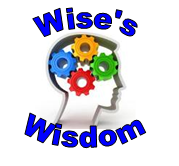Jennifer Adams suggests To Sell is Human by Daniel Pink
To Sell Is Human is another great read by Daniel Pink. In
this book, Pink uses several examples from the play, "Death of a Salesman."
I found this book to be an easy read and enjoyed it, because Pink provides
clear examples and situations to explain his points of emphasis. He claims that
the art of selling has changed due to the information consumers have at their
fingertips. He states that the ABC's of selling have changed from "Always
Be Closing," to "Attunement, Buoyancy, and Clarity." After Pink
explains how to be, he explains what to do: pitch, improvise, and serve. As leaders we
recognize the importance of conversation and value collaboration. Thus, it was
beneficial to see these leadership traits validated in Pink's book.
Vicky Clark suggests A Principal's Guide to Special Education by David Bateman
This is an invaluable resource for new and experienced
principals. It contains everything you need to know about special
education, from special education law to selecting and evaluating special
education staff. Topics include discipline, IDEA 2004, NCLB, evaluation of
students with disabilities, inclusion, adaptations, and due process.
Kim Halley suggests Brain Rules by John Medina
The title captured my
attention; the professional readings that attract me and many busy educators
are those in which the information applies to all areas of life- not limited
only to the career path. In Brain Rules, the author studies
the impact of exercise, sleep and stress on our brain function, including
cognitive connections, attention span, and creativity. As readers apply the
recent brain research, we enhance our role as employee, spouse or parent.
Tim Hart suggests The Connected Educator by Sheryl Nussbaum Beach
I recommend The Connected Educator,
by Sheryl-Nussbaum Beach. Sheryl shares a whole new way to look at our
professional learning through connected learning communities. In this
book, she talks about her three-pronged approach to effective professional
development: local (professional learning community), contextual
(personal learning network), and global (community of practice). We’ll
get to hear Sheryl at our evening event with administrators, and all
administrators will receive a copy of the book.
Susanne Lintz suggests Our Iceberg is Melting by John Kotter
This is a quick, enjoyable, and
inspirational read. It is a fable about a penguin colony (which represents an
organization) that is faced with challenges and how they overcome them. It is
based on the Eight Step Process of Successful Change. If you are looking for
ways to move and change your building, this is a great resource that is fun and
engaging.
Mike McDonough suggests inGenius by Tina Seelig
Can we
teach creativity? If we are truly
continuing with our ongoing pursuit of building environments that foster
innovation, then it’s imperative that we embed creativity in all facets of
teaching and learning…but, how? That’s
where Tina Seelig, Stanford professor and author of inGenious: A Crash Course on Creativity, and her “Innovation Engine” model come in to
play. This model captures the
relationship between the factors (culture, attitude, imagination, resources,
knowledge, habitat) that stimulate creativity.
Brent Wise suggests The One World School House by Salman Khan
The man who created Khan Academy writes an easy to read
book about his viewpoint of education. The reason I like this book so much is
that it isn't a book written "at you" but rather a book written for
us. It provides solid examples of where education was and where Sal believes it
needs to go. Sure you'll disagree with some parts but I found myself agreeing
and taking notes in the margins far more than being upset or feeling threatened.
It challenges your thinking and I believe we always need a little of that.

















